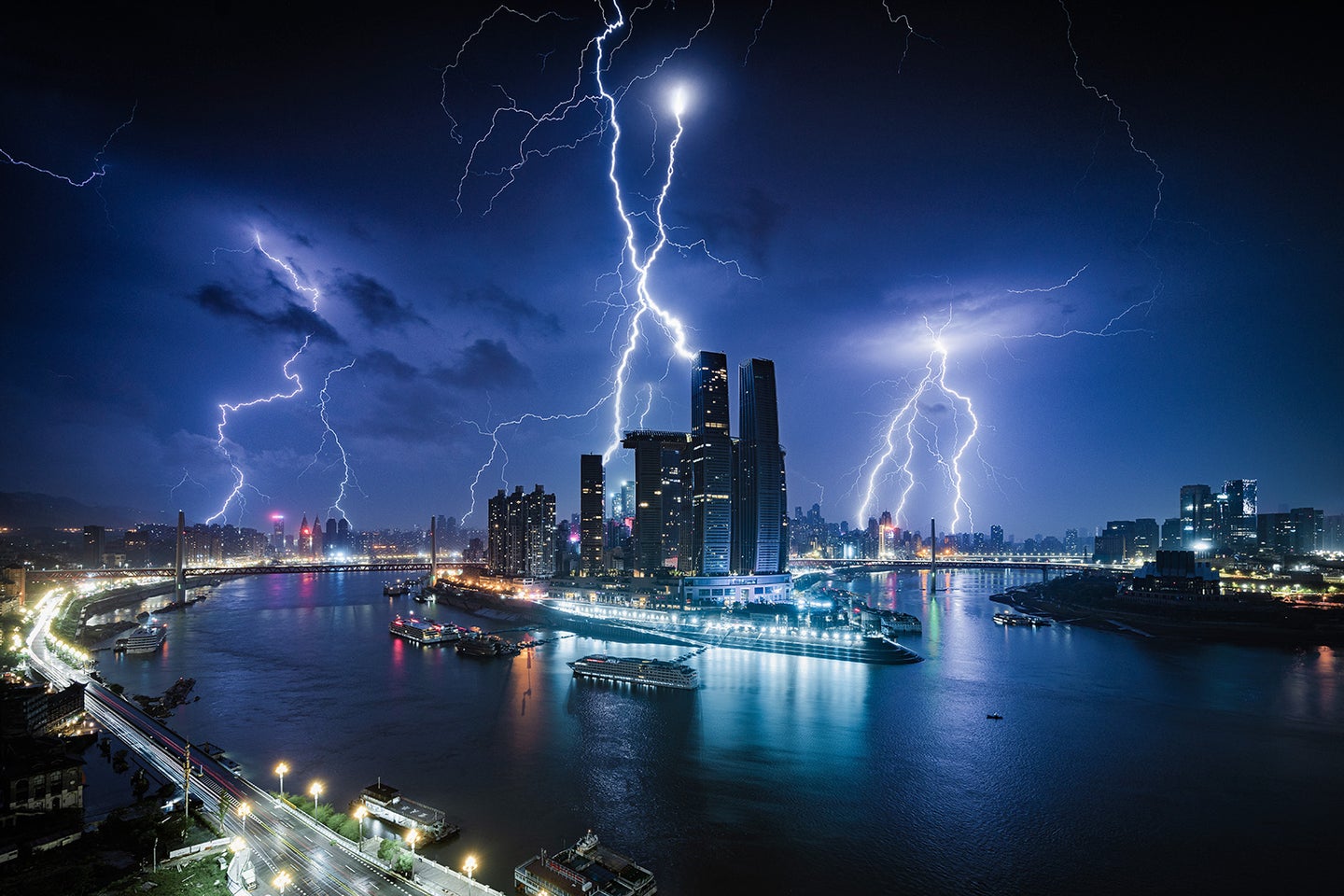See the tempestuous finalists of the Weather Photographer of the Year Awards
Tsunami-like waves, parched earth, and floods are just a few of the dramatic entries.

The scenes feel like something straight out of 2012 or The Sorcerer’s Apprentice. Frost overtakes a window pane, bolts of lighting, extreme drought. The Royal Meteorological Society (RMetS) has selected the finalists for its Photographer of the Year Awards, and the voting is now open to the public. Winners are announced on September 21 and they, along with the finalists, will be featured in the annual calendar available later in the year. Here are some of our favorite contenders.
Related: Parasitic zombie fungus takes first prize in BMC Ecology & Evolution photo competition
Departing storm over Bembridge Lifeboat Station, Jamie Russell

Jamie Russell was chasing storms across the Isle of Wright when he reached Bembridge and was rewarded with an exceptional rainbow, which he took drastic measures to photograph.
“In a panic I waded into the waist-deep water, fully dressed, just to compose this scene.”
Highway to paradise

This otherworldly scene, captured in Slovenia, is thanks to a temperature inversion that causes fog to form on the water’s surface. It happens just a couple of times a year, and Sara Jazbar was there to get the shot.
“The fog stopped under the bridge and lingered there, flowing, moving, as if alive,” Jazbar says.
Winter’s icy grip

From Sweden’s northernmost town of Kurravaara, Kiruna, RMetS Weather Photographer of the Year Felipe Martin Menzella documented the chilling beauty of an icy window.
Scotch mist

In this image, we’re not quite at Loch Ness, but rather at Loch Lomond, in Southern Scotland.
“The woods, the alps, the loch, and Ben Lomond were bathed in ‘Scotch mist.’ This shot was taken just before the sun put in an appearance,” notes photographer Vince Campbell.
Waterlily harvesting

Monsoon season means it’s time to harvest waterlilies to sell at local markets. RMetS Weather Photographer of the Year finalist Shibasish Saha takes us to Barrackpore, West Bengal, India, with a drone to capture a unique perspective on the process.
Dam wet

“Wet Sleddale [reservoir] more often than not doesn’t overflow, but when it does, it’s an amazing site, and the noise is deafening,” notes Andrew McCaren. The overflow was a result of heavy rain and though the subject is cheerfully decked out in rainbow umbrella and electric green rain slicker, we’d guess this is not what Gene Kelly had in mind for a little singing in the rain.
In search of water

The cracked earth only highlights the feeling of desperation in the search for water, two pots dismally empty. Barun Rajgaria shares that during a “drought, the women and children of the village [in Purulia, West Bengal] have to make deep pits in the dry river, in which the frozen water quenches the thirst of the people here.”
Rain bubble

In stark contrast to the previous entry, Betel Tibebu’s image is an abundance of water. Addis Ababa, Ethiopia, experienced flooding after intense rain. Bubbles form when a raindrop hits the surface, trapping the air.
